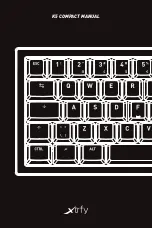
The Sirius and Cubase
113
The Sirius and Cubase:
Synchronisation of the Sirius to Cubase:
The one question that is most frequently asked on our hotline refers to how our products work to-
gether with a sequencer programme. Here we were able to notice that the Steinberg Cubase
programme (also recommended by us, by the way) is the most popular. We will therefore answer the
most important questions using Cubase for reference. Procedure and relevant parameters can in
most cases be adapted for use in other sequencer programmes ( for example Logic or Cakewalk) be-
cause the functions discussed are practically a pre-requisite for any self-respecting software
programme.
At this point we would like to advise that shareware-sequencers and Light- and Demo-versions have
serious operational restrictions. It is possible that such programmes can not process SysEx-data (im-
portant for MIDI-data-Dump), or cannot be synchronised to external devices or perhaps cannot store
files.
We urgently advise you not to work with pirate copies of Cubase or Logic. First of all it is il-
legal, and secondly these "Cracks" are totally unstable as both the Edit and Storage capabilities de-
pend entirely on either a 'Dongle' or, usually in the case of Macintosh versions, an 'Authorisation Key'.
You are better off investing in a licensed version of the software which will provide you with regular
updates and saves you from system errors and data loss just when the pressure is
on.
From time to time it is necessary to synchronise the Sirius with another MIDI-device (for instance a
Computer with Cubase or a drum computer). This means that the connected devices will be working
to one midi-clock and will therefore run at the same tempo. Another advantage of such Synchronisa-
tion is that you can start and stop the devices simultaneously.
In order to set up a synchronisation you will first have to decide which device is to drive the beat, or
in other words, which device's midi-clock is controlling all the other midi devices. This device will
then be the '
and passes on all its clock information to the device or devices you want to syn-
chronise it to. These secondary devices are known as
'. The Sirius can work as Slave or Master.
Which setting is best for which situation is also explained in this chapter.
Cubase offers a generous choice of different synchronisation procedures which for a non-professional
can be quite confusing. You have the options to synchronise your computer with tape machines,
hard disc recorders, even video decks. Sometimes External Sync sources can be formats such as
SMPTE, LTC, VITC, EBU or MIDI TIMECODE (MTC) and are often used to meticulously control a
number of devices simultaneously.
For our purpose (to synchronise the Sirius to Cubase) we have opted for the most simple Sync.-
format: the MIDI-Clock. The MIDI-Clock consists of three important Parts: the "Start" command, the
"Stop" command and the tempo of the clock itself. This clock is sending tempo information with a
gap of only one-96th of a note as a synchronisation signal to the Slave(s). The Slave(s) will therefore
always know exactly where the Master is within each bar of the pattern or song. Both devices are
then 'running in sync'.
To try out the following examples you must connect the MIDI-IN-socket of the Sirius to the MIDI-
OUT-socket of the Computer and the MIDI-IN-socket of the Computer to the MIDI-OUT socket of
the Sirius.
Examples, diagrams and instructions regarding the MIDI-connection of the Sirius with a computer
and other MIDI-devices can be found in the chapter called: "MIDI-connection-examples with the
Sirius"
Caution:
really
Master'
'Slaves
!
See page 102
















































